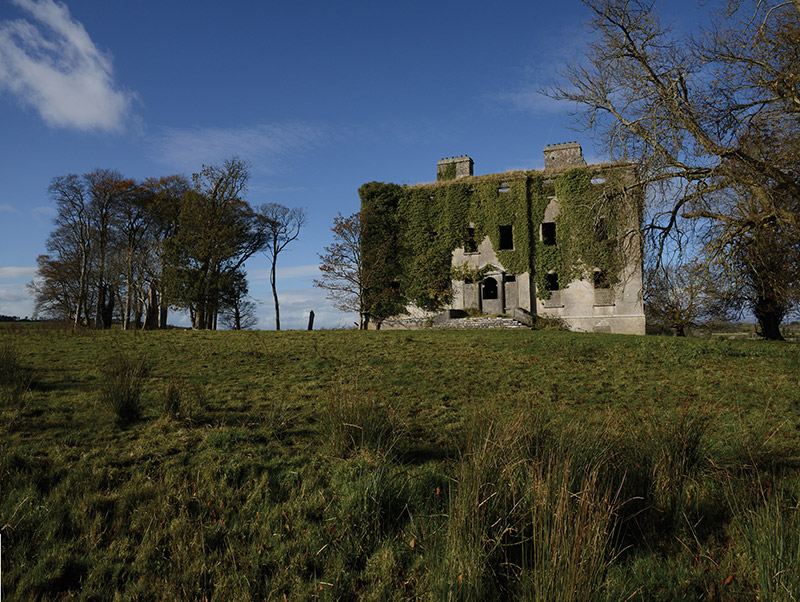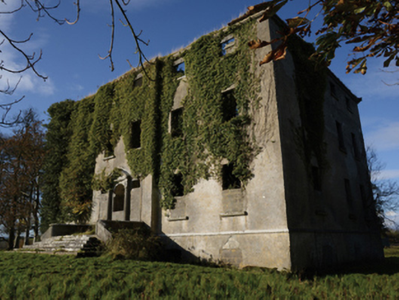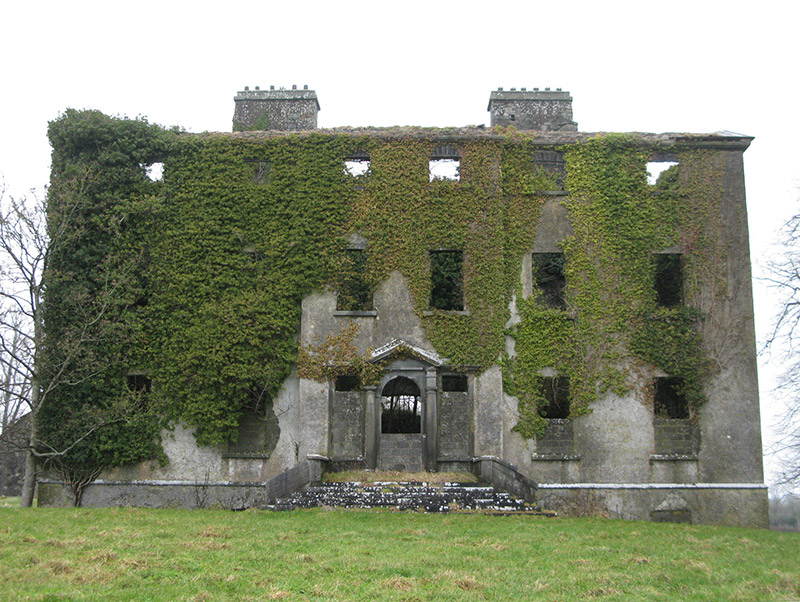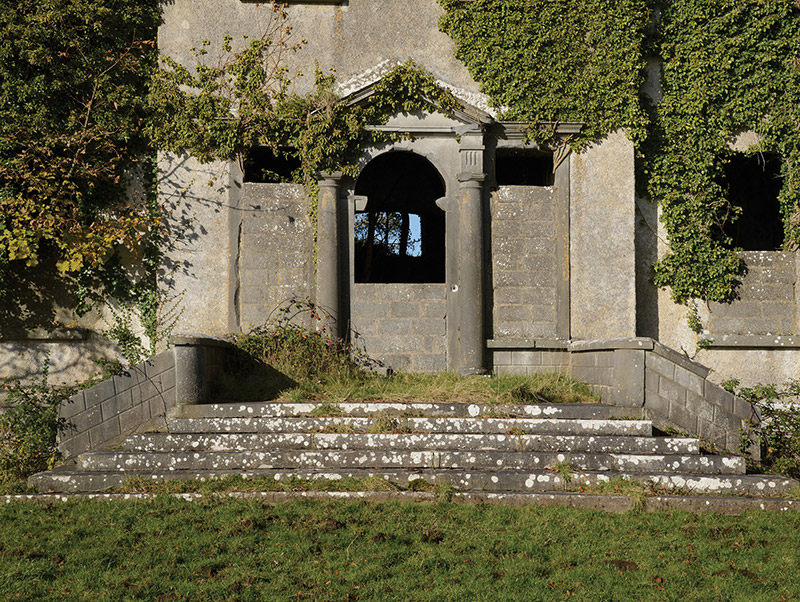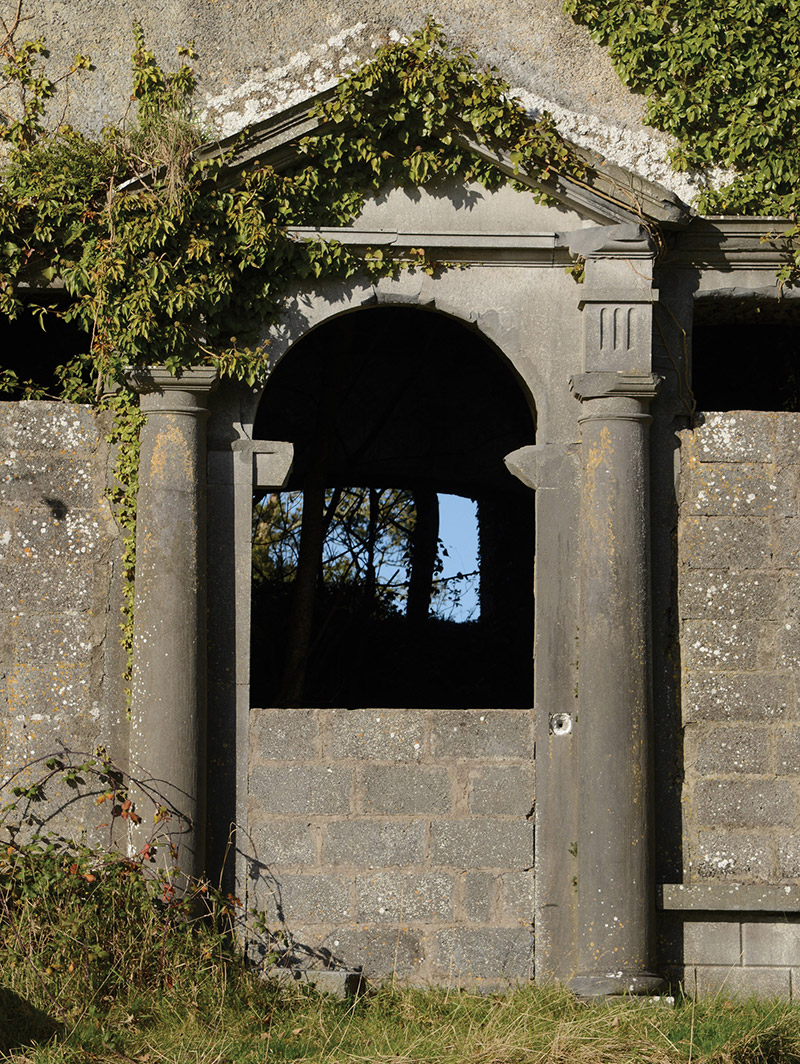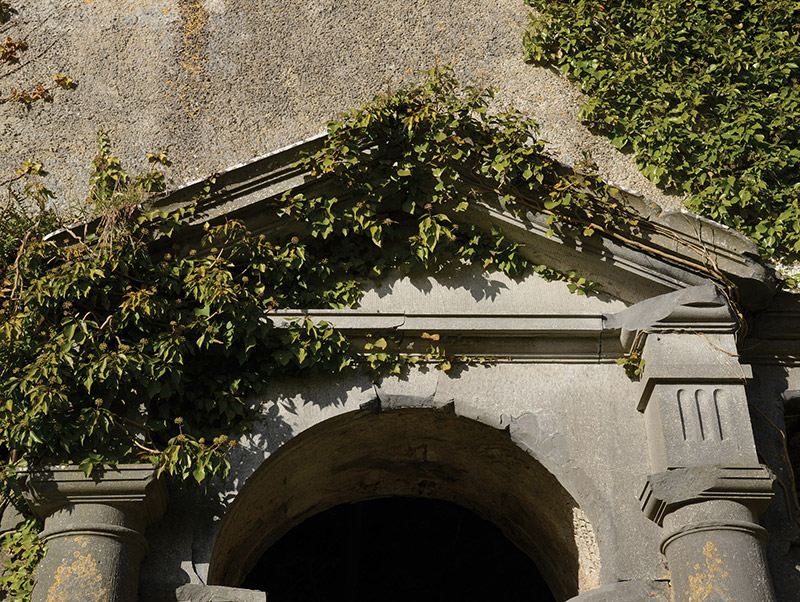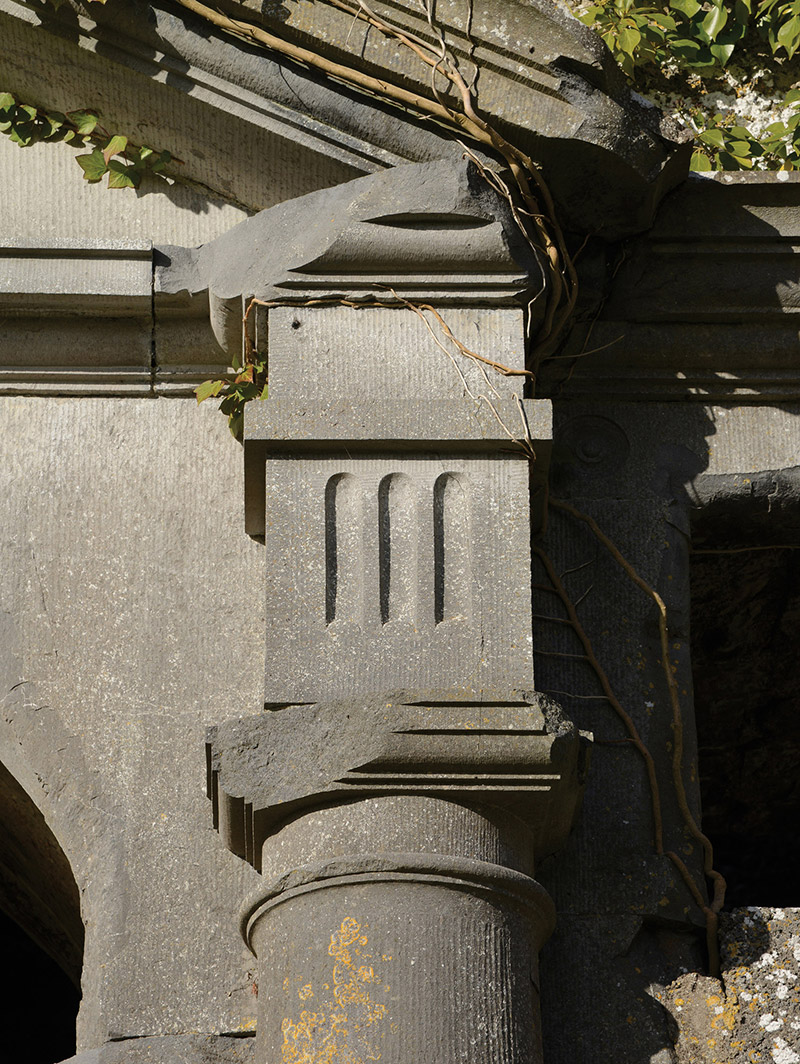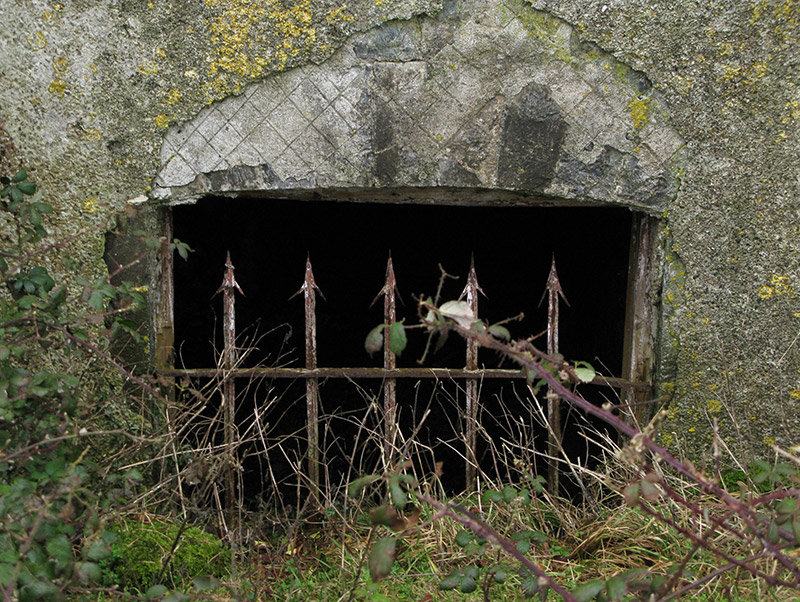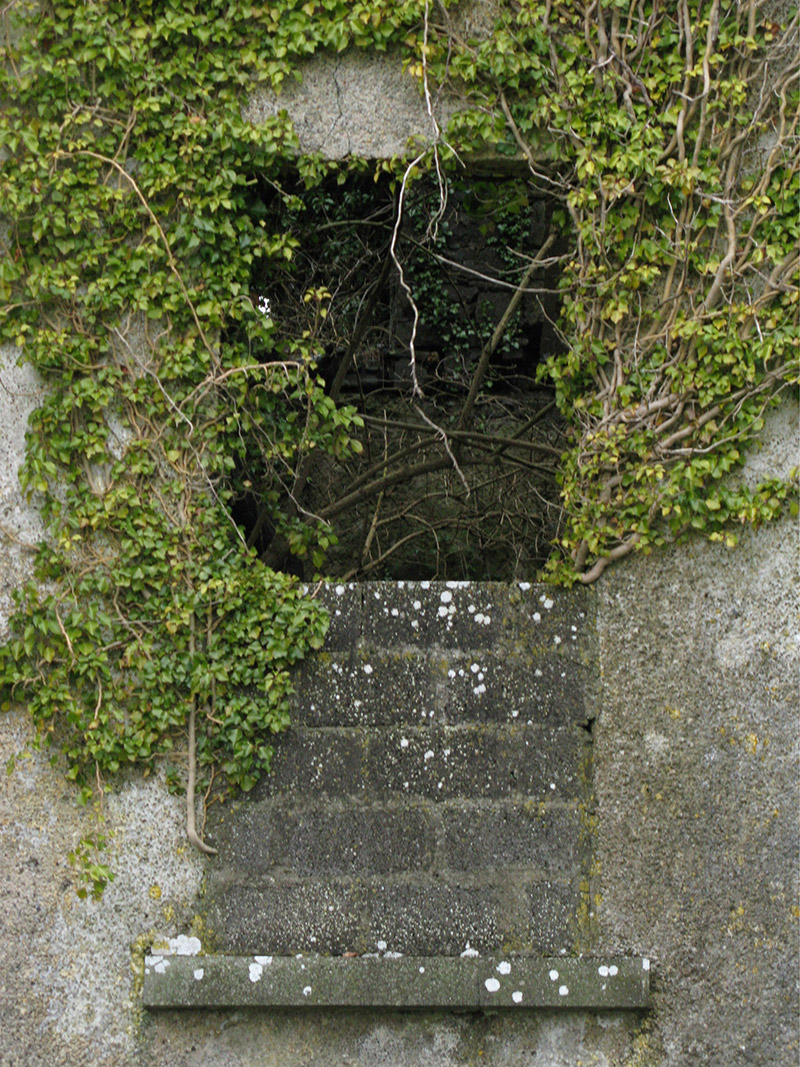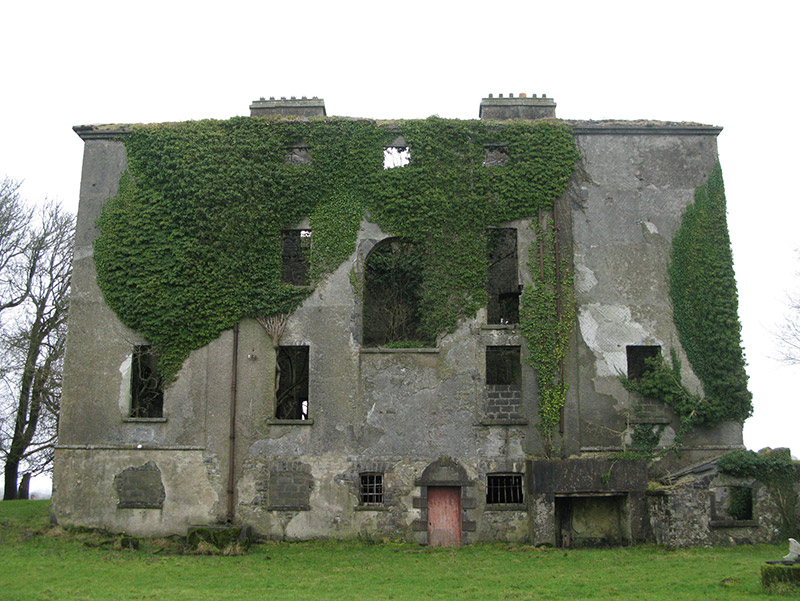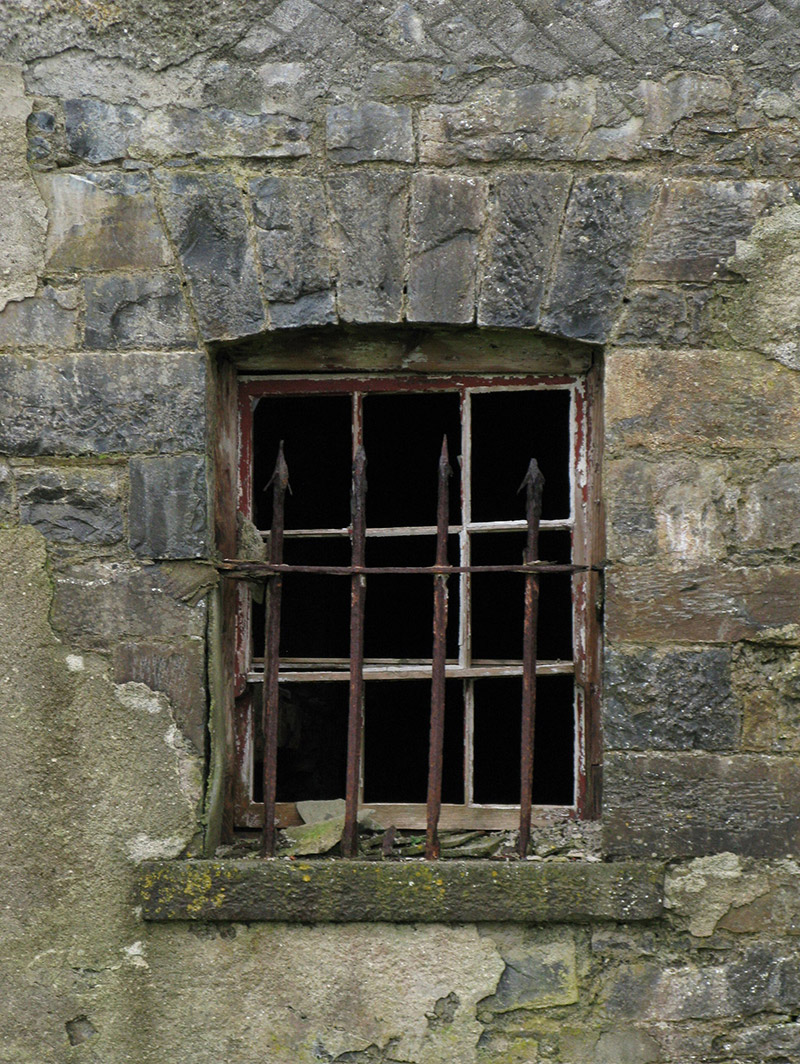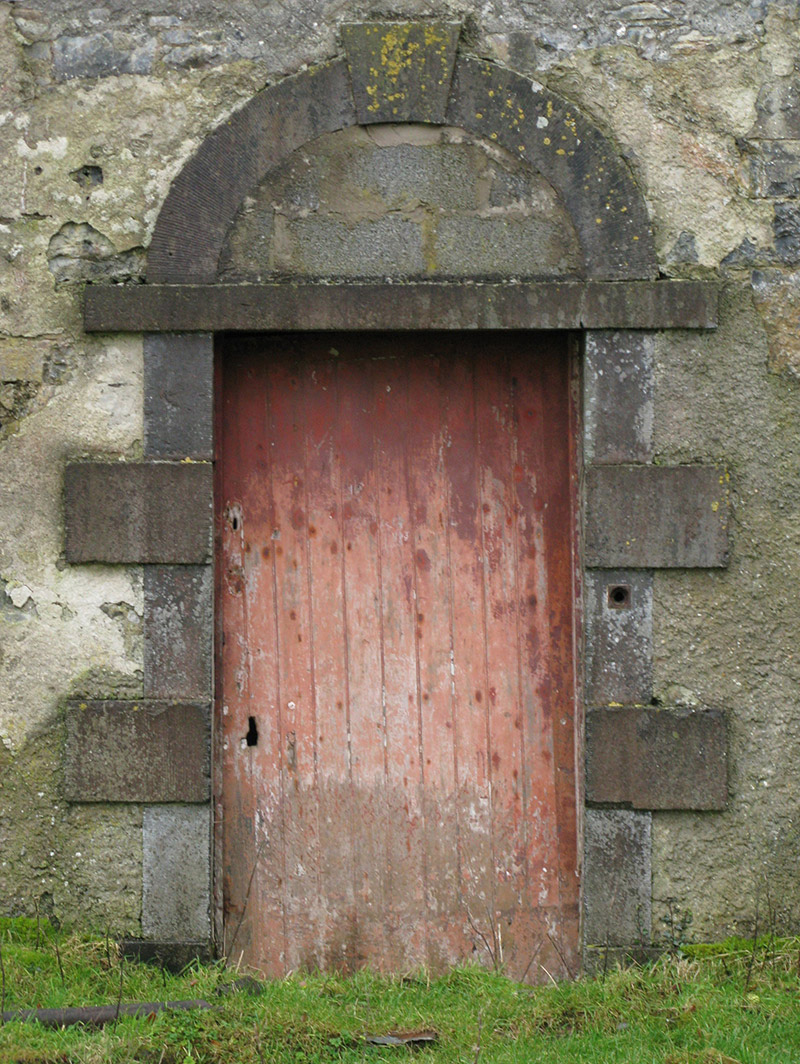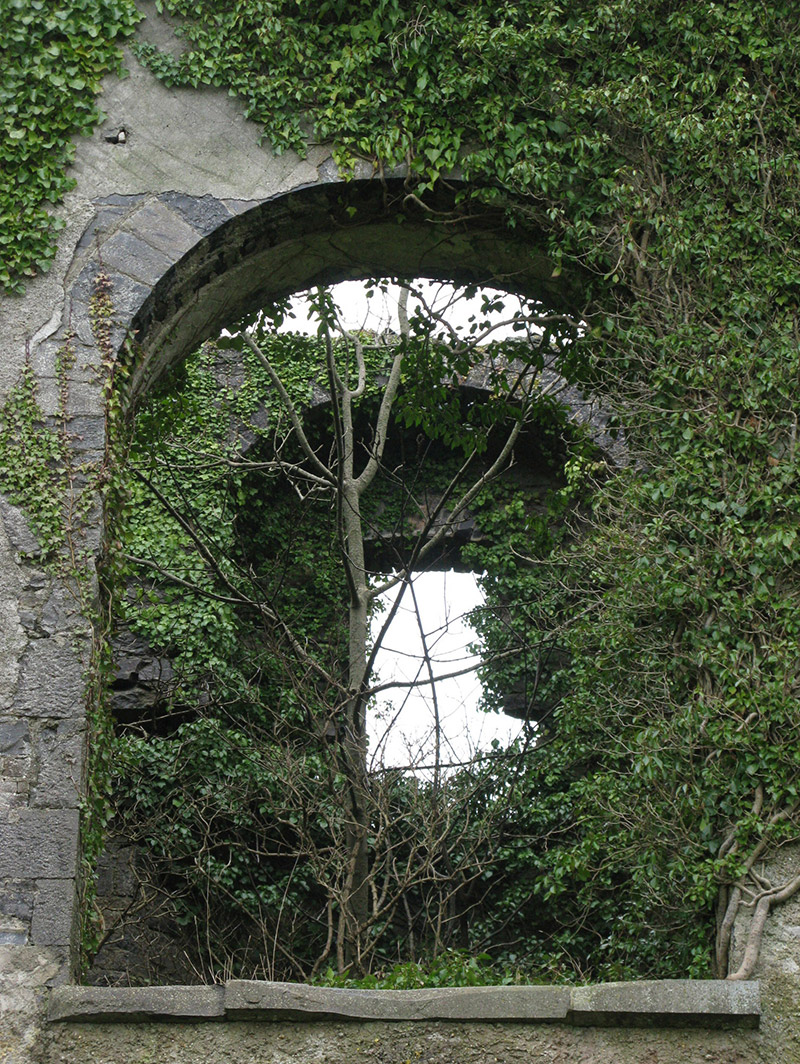Survey Data
Reg No
31310001
Rating
Regional
Categories of Special Interest
Architectural, Historical, Social, Technical
Original Use
Country house
Date
1765 - 1775
Coordinates
117985, 278431
Date Recorded
12/01/2011
Date Updated
--/--/--
Description
Detached six-bay (three-bay deep) three-storey over part raised basement country house, built 1770; extant 1777, on a symmetrical plan centred on two-bay full-height breakfront; five-bay full-height rear (north) elevation centred on three-bay full-height "bas-relief" breakfront. Damaged, 1839. Occupied, 1911. Sold, 1967. Burnt, 1970. Now in ruins. Hipped roof now missing retaining fragments of slate finish with pressed or rolled lead ridges, paired rendered central chimney stacks on axis with ridge having cut-limestone stringcourses below capping supporting crested terracotta or yellow terracotta pots, and remains of cast-iron rainwater goods to front (south) elevation on creeper- or ivy-covered cut-limestone "Cyma Recta" or "Cyma Reversa" cornice with remains of cast-iron rainwater goods to rear (north) elevation on cut-limestone stepped cornice retaining cast-iron downpipes. Creeper- or ivy-covered fine roughcast walls on lichen-covered dragged cut-limestone chamfered cushion course on fine roughcast base. Round-headed central door opening in tripartite arrangement approached by flight of six dragged cut-limestone steps, dragged limestone ashlar doorcase with engaged Doric columns supporting "Cavetto"-detailed pediment on fluted "Dosserets". Square-headed window openings including square-headed window openings to rear (north) elevation centred on round-headed window opening (first floor) with drag edged dragged cut-limestone sills, and concealed cut-limestone voussoirs framing concrete block infill with some retaining six-over-three (basement), nine-over-six (ground floor), six-over-six (first floor) or three-over-three (top floor) timber sash windows behind arrow head-detailed wrought iron bars. Round-headed central door opening to rear (north) elevation with drag edged dragged cut-limestone block-and-start surround centred on keystone framing timber boarded door. Interior in ruins including (basement): groin vaulted cellars. Set in unkempt grounds.
Appraisal
The shell of a country house representing an important component of the later eighteenth-century domestic built heritage of south County Mayo with the architectural value of the composition, one annotated as "Clougher [of] Lynch Esquire" by Taylor and Skinner (1778 pl. 216), confirmed by such attributes as the deliberate skewed alignment maximising on scenic vistas overlooking a gently rolling grounds; the symmetrical plan form centred on a Classically-detailed doorcase demonstrating good quality workmanship; the definition of the principal floor as a slightly elevated "piano nobile"; and the diminishing in scale of the openings on each floor producing a graduated visual impression. Although reduced to ruins in the later twentieth century, a prolonged period of exposure thereafter eradicating all traces of '[the] ceilings of Adamesque plasterwork' (Bence-Jones 1978, 85), the elementary form and massing survive intact together with remnants of the original fabric, both to the exterior and to the interior, including some crown or cylinder glazing panels in hornless sash frames. Furthermore, adjacent outbuildings (see 31310002); and a walled garden (see 31310003), all continue to contribute positively to the group and setting values of an estate having historic connections with the Lynch family including Patrick Lynch (NUIG); the Crean-Lynch family including Andrew Crean-Lynch JP DL (1787-1853), one-time High Sheriff of County Mayo (fl. 1832); and Major Patrick Crean-Lynch JP DL (1814-81), one-time High Sheriff of County Mayo (fl. 1846); and the FitzGerald-Kenney family including Colonel James Christopher FitzGerald Kenney (d. 1877), 'late of Clogher House Ballyglass County Mayo and of Merrion-square South Dublin' (Calendars of Wills and Administrations 1877, 382); and James FitzGerald-Kenney TD (1878-1956), 'Magistrate [and] Barrister' (NA 1911) and one-time Minister for Justice (fl. 1927-32).
